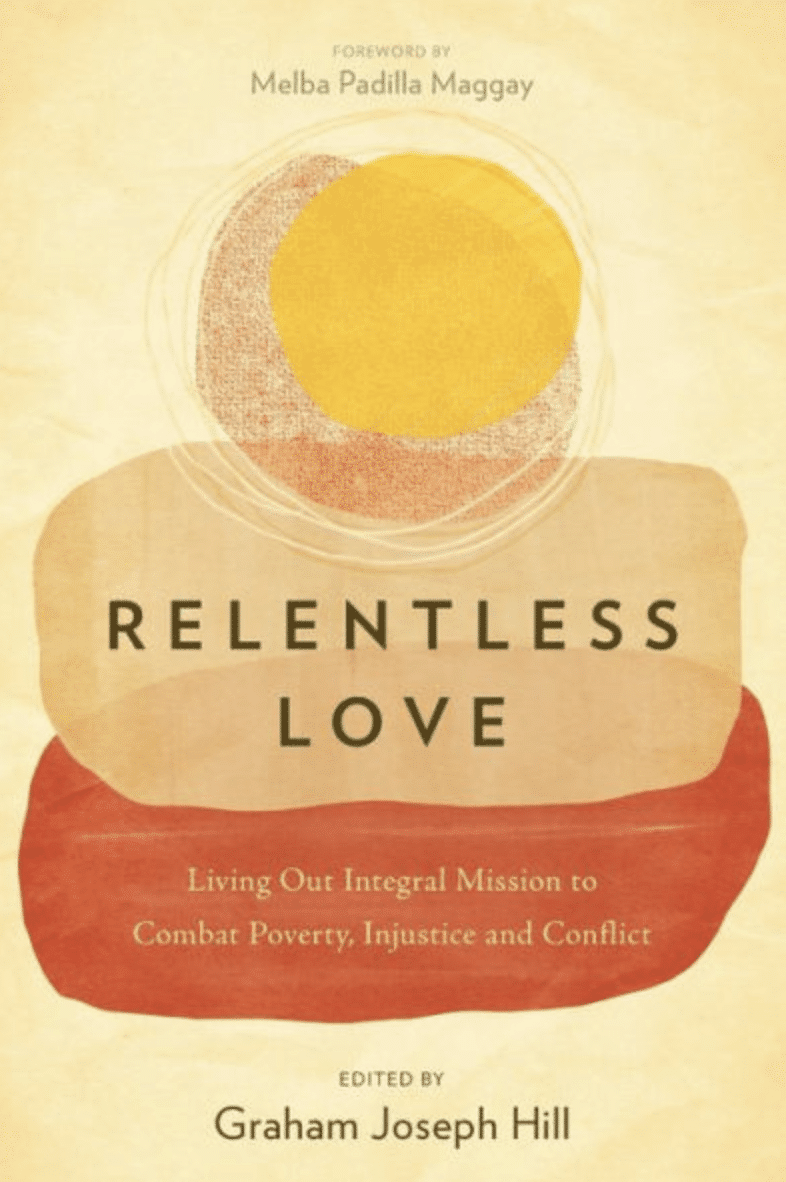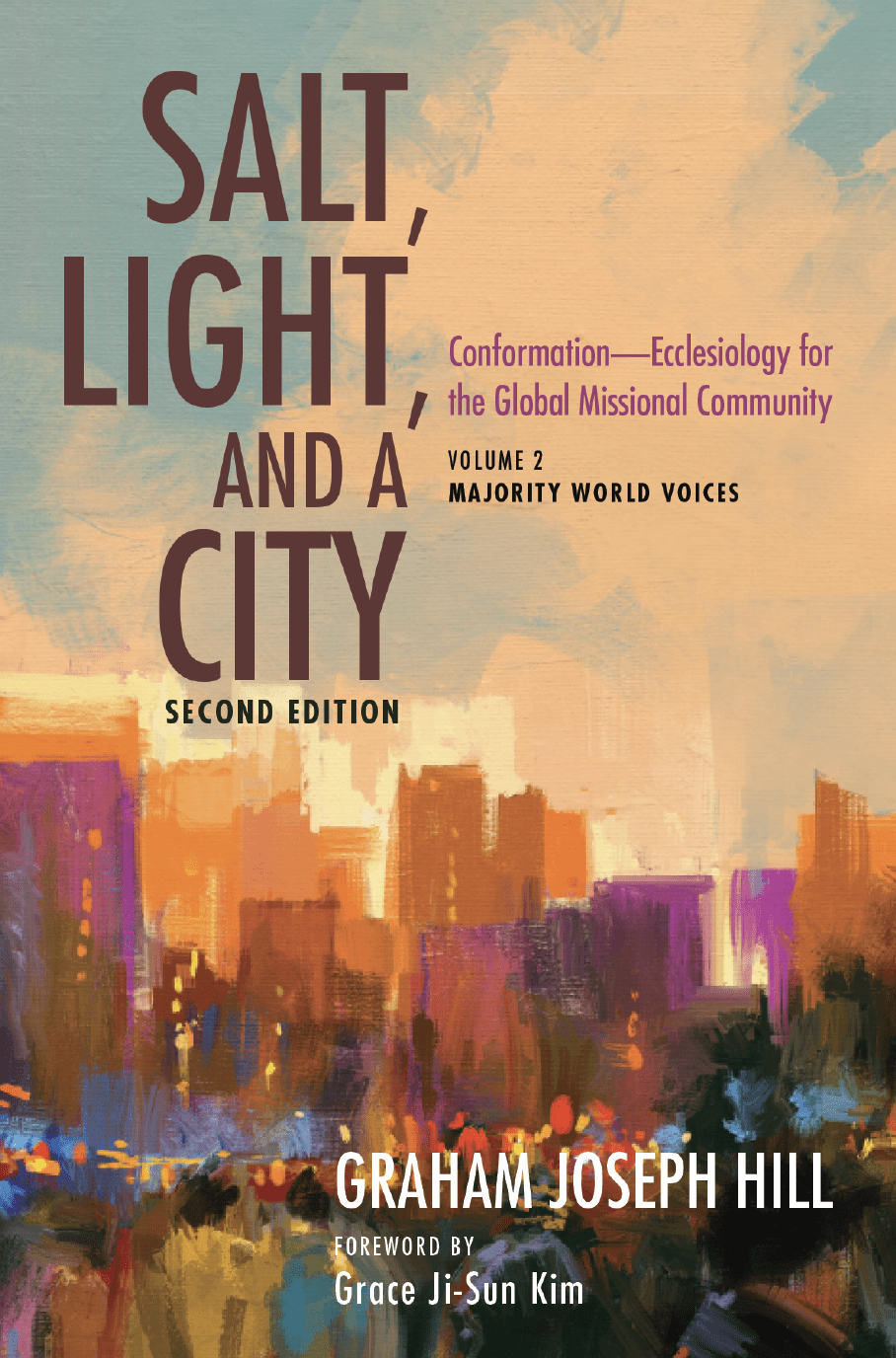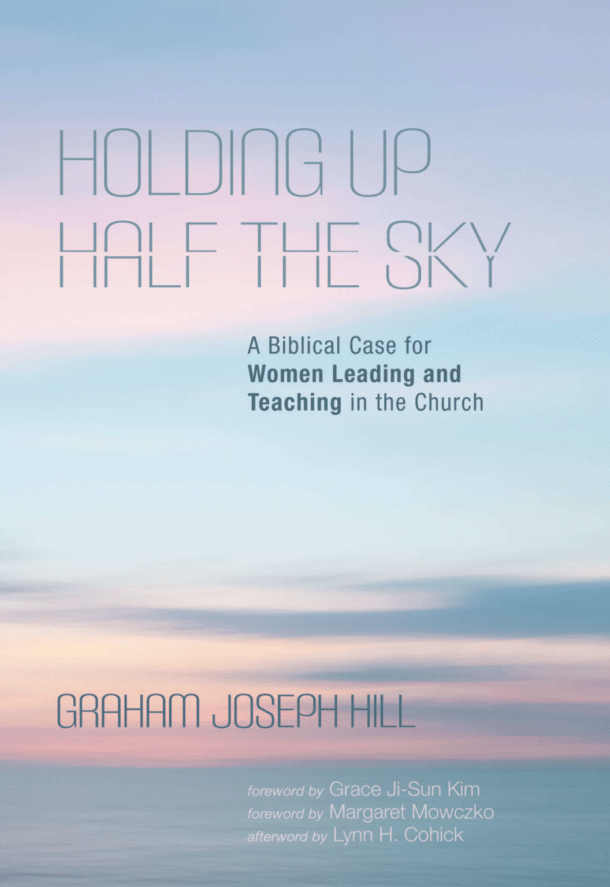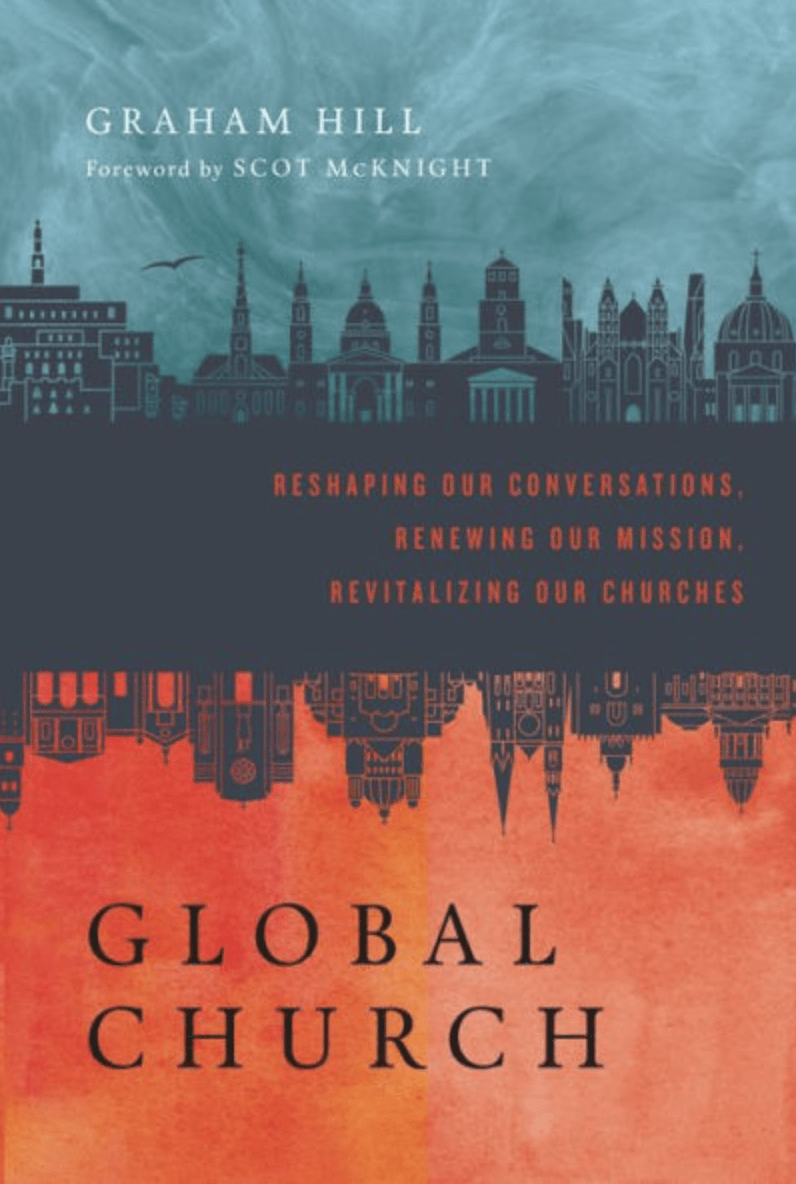Abandoning a Diseased Christian Social Imagination
“I want Christians to recognize the grotesque nature of a social performance of Christianity that imagines Christian identity floating above land, landscape, animals, place, and space, leaving such realities to the machinations of capitalistic calculations and the commodity chains of private property. Such Christian identity can only inevitably lodge itself in the materiality of racial existence.”
Reimagining our Christian connections and identities is a theological act. It’s “a Christian act of imagining. And if, as I believe, Christian life is indeed a way forward for the world, then it must reemerge as a compelling new invitation to life together.”[1]
Recently, I read Willie James Jennings’ The Christian Imagination: Theology and the Origins of Race (Yale University Press, 2010).
The book challenges so much of my understanding about the historical formation, and contemporary problems, in many Christian approaches to theology, identity, nationhood, politics, race, land, place, creation, discipleship, and community. The book is a theological tour de force. It should be read alongside J. Kameron Carter’s Race: A Theological Account (see my review of that book here).
In an era where Christian identities seem so enmeshed with race, politics, nationalism, and material goods, Jennings’ book is both a historical study of how we ended up in this place, and a contemporary challenge to imagine a different reality.
[bctt tweet=”We must abandon a diseased & disfigured Christian social imagination” username=”GrahamJGHill”]
Jennings shows how the Christian social imagination is often diseased and disfigured. It’s wedded to racialized, individualistic, privatized, and rootless identities. We find ourselves in this place because of historical events. And we need to confront this situation head on and theologically, if we are going to demonstrate a compelling witness and life together in the world.
Jennings offers a compelling vision of a healed and whole Christian community (and a redeemed Christian social imagination). The way Jennings builds his thesis is exquisite.
One: Setting the Scene
What’s gone wrong with the Christian social imagination?
Talking about an encounter from his childhood, where some “white” Christians seemed oblivious to the faith and community of African American Christians living in their very neighborhood, Jennings writes the following. “In the small space of a backyard I witness a Christianity familiar to most of us, enclosed in racial and cultural difference, inconsequentially related to it’s geography, often imaginatively detached from its surroundings of both people and spaces, but one yet bound to compelling gestures of connection, belonging, and invitation. Here, however, we are operating out of a history of relations that exposed a distorted relational imagination.”[2]
But, in spite of this distorted social imagination, “There is within Christianity a breathtakingly powerful way to imagine and enact the social, to imagine and enact connection and belonging.”[3]
Here Jennings comes to his key proposition. “I argue here that Christianity in the Western world lives and moves within a diseased social imagination.”[4]
This diseased social imagination is deeply connected to colonialism, and to the disfigured racial and personal identities that emerged during the colonial moment. Jennings notes how he experienced this in theological colleges. “What I observed in the theological academy was fundamentally the resistance of theologians to think theologically about their identities. It was the negation of a Christian intellectual posture reflective of the central trajectory of the incarnate life of the Son of God, who took on the life of the creature, a life of joining, belonging, connection, and intimacy…. The social vision that holds court in the theological academy imagines its intellectual world from the commanding heights of various social economies: cultural, political, and scholastic.”[5]
Here Jennings says that, in his experience, Christian theologians don’t think they’re in charge of academic or political worlds. But their intellectual posture is one of power and control, and they expect others (e.g. indigenes, students, and outsiders) to be fluid and adaptable, but refuse to be so themselves. In this attachment to power and control, a rigidity, superiority, and staleness grows, that stops Christian theologians from forming habits of humility, fluidity, embodiment, and engagement, which lead to transformation.
Jennings doesn’t believe that we’ve entered a post-Christendom age in which Christianity is distanced from state or cultural power, and where Christians are now in exile in a strange land. “While the old Anglo-Saxon Protestant hegemony may be over, such readings of the reality of Christian existence in the West are painfully superficial. They bypass the deeper realities of Western Christian sensibilities, identities, and habits of mind which continue to channel patters of colonialist dominance.”[6]
Lamenting this state of affairs, Jennings returns repeatedly to hope. “Yet Christianity marks the spot where, if noble dream joins hands with God-inspired hope and presses with great impatience against the insularities of life, for example, national, cultural, ethnic, economic, sexual, and racial, seeking the deeper ground upon which to seed a new way of belonging and living together, then we will find together not simply a new ground, not simply a new seed, but a life already prepared and offered to us.”[7]
Two: Displacement
What happens when we become groundless and then mainly identify with our race and skin color?
Ever since the colonial period, the gestalt of whiteness has ruled. What is whiteness? Whiteness includes skin color, but it is more than that. It’s about race, money, status, power, agency, desirability, and more. Whiteness is about where one falls on the scale between being “white” (elected, good, ideal, beautiful, desirable) and being “black” (the opposite of those things).
Whiteness leads to a racialized and displaced world. It has formed oppressive and mythical notions of “race.” And it’s led to displacement.
Displacement is a significant problem in contemporary Western cultures. Displacement happens when we replace our primary identification with land, geography, and embodiment in nature and community, with identification with color and race.
Racial agency and scales of whiteness “rendered unintelligible and unpersuasive any narratives of the collective self that bound identity to geography, to earth, to water, trees, and animals.”[8]
Whiteness has a profound impact on identity, and it leads to a form of displacement and disembodiment that can only find refuge in dysfunctional, divisive, destructive, disconnected, and dehumanizing racial or national identification.
In this environment, Christian theology and imagination become displaced and groundless.
“Detached from the land, oblivious to the ongoing decimation of native ecologies, deeply suspicious of native religious practices, and, most importantly, enclosed within Iberian whiteness, the performance of Christian theology would produce a new, deformed, and deforming intellectual circuit.”[9]
Three: Translation
What is transferred in processes of translation?
Translation of biblical texts into the vernacular (into the everyday language of people) holds many positive benefits.
First, people can engage the Scriptures in their own language, and apply the insights contextually and with cultural awareness.
Second, it opens up opportunities for indigenous, local agency.
But, when translation is bound up with colonialist ideologies, it perpetuates a range of problems. “What is at stake here is precisely the character and shape of agency, given the work of translation that is deeply bound up inside colonialist operations… [Translation that is bound to colonialist assumptions produces] isolating and reductive forms of Christian agency. This latter claim puts in a different light the possible positive historical benefits of Christian translation. The positive historical benefits of Christian translation must be seen inside this wider tragedy.”[10]
I won’t go into detail here, but at this point in his thesis Jennings goes on to engage the work of Lamin Sanneh and Andrew Walls. Jennings is concerned that the cultural nationalisms we see in Africa, Asia, and Latin America are often “wedded to theological formation.” This is precisely because the process of translation into vernaculars (during the colonial period) also transferred a colonialist, nationalistic, historically-dislodged, conquest-oriented, ethnocentric, racially-shaped Christian imagination.
Translation is important and necessary to Christian faith and theology, but it needs to be done carefully, because, as we’ve seen, it can also be dangerous.[11]
And we must address an associated issue. Processes of translation and biblical interpretation too often encourage theological “camps” that are often characterized by insularity and conflict.
Somehow, we need to move beyond the insularity and divisions present in Christian social and intellectual life. These form because we don’t reflect on Christian identity well, and because we don’t have a sufficient vision of our life together.
This includes the “insularity of Christian theology and all its identifiers (for example, orthodox, liberal, conservative, and so on) and the insularity of its Christian contextual responses and all its identifiers (for example, African, Asian, feminist, womanist) that repeatedly show Christians the missed opportunities of Christian intellectual life…. [The incarnate Son has joined the divine life to ours] and invites us to deep abiding intellectual joining, not only of beliefs and practices but of common life, and all of it of the multitude of many tongues.”[12]
Four: Intimacy
How do we embrace a new order of relationship that’s rooted in the life of Jesus?
Here, Jennings asks another important question. “How is it possible for Christians and Christian communities to naturalize cultural fragmentation and operationalize racial vision from within the social logic and theological imagination of Christianity itself?”[13]
Jennings answers this question by looking at the problems inherent in historical approaches to Scripture. Certain forms of biblical literacy can be wedded to colonial agendas and cultural circularity.[14]
Translations into the vernacular have many positives; but they can also entrench problems in identity formation. The vernacular Bible strengthens common language and the idea of nationhood. Pious Christian vision too often becomes converted into “nationalist-vision” (we see this in the United States and elsewhere).[15]
Instead of an embrace of the continuity between Israel’s history and Jesus’s history and that of each particular cultural Christian group, the history of Jesus and Israel disappears, and is replaced by a focus on chosen race (or rejected race) and blessed nation (or irredeemable, evil nation).
On the one hand, literacy and vernacular translation “enabled tremendous missional, even redemptive, ends.”
On the other hand, “literacy’s redemptive possibilities where themselves drawn inside projects of nation building as well as burgeoning performances of class consciousness.”[16]
In the North American context, African Americans were taught to read the Bible in a way that reinforced white supremacy and hegemony. “Again and again the Scripture is surrounded by interpretations so that the slave is led to the text chained in and to a discourse of white hegemony.”[17]
African Americans learnt (especially during the period of slavery) to read Scripture alone and apart and in fear of violence and death. “Where biblical literacy was guided by white slaveholding society, it was a profoundly racialized reading. The Bible was read within racial difference, and racial difference was read into the Bible.”[18]
So, what can be done?
The church needs to embrace a theology of creation, since the distortions that have been outlined here are a “revolt against creation.”[19]
“A Christian doctrine of creation is first a doctrine of place and people, of divine love and divine touch, of human presence and embrace, and of divine and human interaction… Christianity is in need of place to be fully Christian… At heart, there was an important aspect of the connection between creation and redemption that probably never seemed to take hold in the Christian imagination.”[20]
[bctt tweet=”Christianity needs a theology of place & land & creation to be fully Christian” username=”GrahamJGHill”]
Given the multitude of nations, ethnicities, and people groups that the people of God come from today, how are they to understand their collective identity? What does it mean to be God’s people?
Jennings finds the answer in locating our story and theology in the story of biblical Israel and Jewish Jesus. “Christianity and Christian theology are unintelligible without [biblical] Israel.”[21]
I won’t go into all the details of Jennings’ argument, but I will say that it’s a compelling, biblical vision.
Israel is God’s chosen people. But we must resist turning “Israel’s election into ethnic ideology.”[22] This isn’t about God choosing and honoring a particular ethnicity, but about God forming a people in the world.
As Gentiles, we understand our story in the light of the story of (biblical) Israel and of the Jewish Jesus. “What we know of our collective selves, of our peoples, and of our ways of life is not eradicated in the presence of Israel’s God, but that knowledge is up for review. Indeed, some of the stories, practices, and fragmented memories that lay hidden in the shadows of our peoples must now be moved to the enter of life. Other truths of our people, time-honored, irrefutably powerful, aiming toward eternality are irretrievably weakened in the presence if Israel’s God.”[23]
In Jesus, diverse peoples are drawn together through faith in the God of Israel.
“In Jesus, Israel’s election does a stunning work by opening the possibilities of boundary-shattering love between strangers and enemies. The election of Jesus turns Israel’s election outward. This election enabled desire to be formed between Jew and Gentile, a desire that drew them together in longing for him and in turn invited them to desire one another… One of the most important episodes in the book of Acts beyond the episode of the day of Pentecost was the vision and action of Peter in Acts 10 and 11, which culminate in the first church council noted in chapter 15. This dynamic story… [reveals] a new order of relationship for Jews and Gentiles coming into being rooted in the life of Jesus.”[24]
[bctt tweet=”In Jesus, diverse peoples are drawn together through faith in the God of Israel” username=”GrahamJGHill”]
What does this mean for the histories of particular cultures and people groups? “The multiple histories of peoples continue in this new spatial reality but are now situated in the story of [biblical] Israel… The power of this account of Gentile status radically undermined any distinction Gentiles held for themselves vis-à-vis other peoples. It is the ultimate deconstructive statement regarding Gentile ethnocentrism. If Jesus constitutes a new space for Jew and Gentile existence, then in that new space a common life must ensue that allows the formation of a new identity.”[25]
Jennings says that this isn’t the church replacing Israel. This isn’t the church usurping Israel’s story. Rather, we find our identity as people bound to the story of biblical Israel and Jewish Jesus.
From this reality, “Jesus intends the formation of a new humanity in his presence… This new biracial humanity, Jew and Gentile (metaphorically speaking), would be the basis for peace. Jesus marked an alternative path away from violence and toward peace through his own body, in which he constituted a space of reconciliation. In a powerful inversion of the power of death, Paul claims that Jesus, through his death, put to death hostility… The new people formed in this space imagine the world differently, beyond the agonistic vision of nations and toward the possibility of love and kinship.”[26]
We’ll never enjoy the richness and depth of the new, biracial humanity in Jesus Christ until we confront the racialization of the world. The advent of whiteness, and the racialization of the contemporary world, has led to diseased and disfigured churches, theologies, and relationships.
The good news is that Jesus offers a vision of the new creation and the new humanity. It’s a vision of healing, wholeness, pace, reconciliation, love, kinship, and intimacy.
Five: Hope
How do we recover a healed and whole Christian Social Imagination?
We need to tell a new story about race.[27] People need to understand the Medieval, pre-Enlightenment origins of the concept of race. Christian must recognize the way faulty and diseased theological visions have contributed to the problem. We need to analyze our theology, and the way it has shaped our Christian practices and imagination.
What does Willie James Jennings say we need to do, to recover a healed and whole Christian social imagination?
-
CULTIVATE A WAY OF LIFE:
We need “a way of life that illumines the God of Israel as the reality between land and peoples.”[28] We are called—through a theology of creation, and a deep understanding of the story of biblical Israel and the Jewish Jesus—to value place, land, and the deep connections between peoples and lands.
-
DEVELOP A VISION OF THE CREATOR:
We need “a vision of the Creator arising through the hearing of Israel’s story.” As we engage this story, we see it in the light of the person and work of the historical Jesus. The Spirit of Christ enables us to discern how our “cultural practices and stories both echo and contradict the divine claim on [our] lives.”[29]
-
EMBRACE A NEW IDENTITY:
We need “a new identity rooted in the resurrected Son of God.” Our cultures and ethnicities do shape our identities. But, rooting our identity in Jesus Christ, we discover fresh ways to love, embrace, and belong to the Body of Christ, which is made up of manifold ethnicities, cultures, and people groups.[30]
-
PURSUE A PROCESS OF TRANSFORMATION:
We need “a process of transformation that involves the enfolding of peoples and their ways of life inside one another through communion with the triune God.” This leads to peace and love between groups that are usually at odds with each other. It also leads to the crossing and bending and breaking and transgressing of boundaries. Old enmities, boundaries, and divisions are done away with, through the power and presence of the triune God. We discover a new “kinship network in Jesus Christ.”[31]
-
FOSTER A NEW LIFE IN JESUS CHRIST:
We need “a vision of a new life in Jesus Christ.” Jesus leads us into communion with biblical Israel and each other, for the sake of all peoples. Jesus also reconfigures our Christian social imaginations.[32]
-
NURTURE A PATTERN OF DISCIPLESHIP:
We need “a pattern of discipleship that moves forward from the trajectory of Pentecost.” Pentecost inspires us to unity, empathy, humility, openness, embrace, mutual submission, hope, and love. In the power of the Spirit we choose to bind our lives together (often with people of different cultures, ethnicities, and people groups).[33]
-
DISPLAY A FRESH COMMUNION WITH GOD AND OTHERS:
We need a fresh communion with God and others that witnesses to a fragmented, racialized, displaced, and disfigured world. We need “the emergence of spaces of communion that announce the healing of nations through the story of Israel bound up in Jesus.” In the power of the Spirit, and witnessing to Christ, these spaces are “situated anywhere and everywhere the disciples of Jesus live together.”[34]
Jennings hasn’t lost hope in the church, and neither should we. The church isn’t “lost, moribund, or impotent,” even when its social imagination is diseased and disfigured.[35]
[bctt tweet=”Christians must abandon racialized & disembodied social imaginations” username=”GrahamJGHill”]
What are Jennings’ main purposes for this book?
He wants to highlight an historical and contemporary problem. “I want Christians to recognize the grotesque nature of a social performance of Christianity that imagines Christian identity floating above land, landscape, animals, place, and space, leaving such realities to the machinations of capitalistic calculations and the commodity chains of private property. Such Christian identity can only inevitably lodge itself in the materiality of racial existence.”[36]
And he wants to inspire us to act, in a spirit of hope. Reimagining our Christian connections and identities is a theological act. It’s “a Christian act of imagining. And if, as I believe, Christian life is indeed a way forward for the world, then it must reemerge as a compelling new invitation to life together.”[37]
Graham Hill
Dr Graham Hill is the Founding Director of The GlobalChurch Project – www.theglobalchurchproject.com. He’s the author of “GlobalChurch: Reshaping Our Conversations, Renewing Our Mission, Revitalizing Our Churches” (IVP, 2016), and 3 other books.
© 2016 All rights reserved.
Copying and republishing this article on other Web sites, or in any other place, without written permission is prohibited.
[2] 4.
[3] 4.
[4] 6.
[5] 7.
[6] 8.
[7] 11.
[8] 59.
[9] 81–82.
[10] 155.
[11] 161.
[12] 202.
[13] 208.
[14] 209.
[15] 210.
[16] 218.
[17] 239.
[18] 240. Italics added for emphasis.
[19] 248.
[20] Ibid.
[21] 251.
[22] 254.
[23] 258.
[24] 267.
[25] 271.
[26] 272 & 274.
[27] 289.
[28] 292.
[29] Ibid.
[30] Ibid.
[31] Ibid.
[32] Ibid.
[33] 293.
[34] Ibid.
[35] Ibid.
[36] Ibid.
[37] 294.
Want to get your hands on more, see our subscriptions
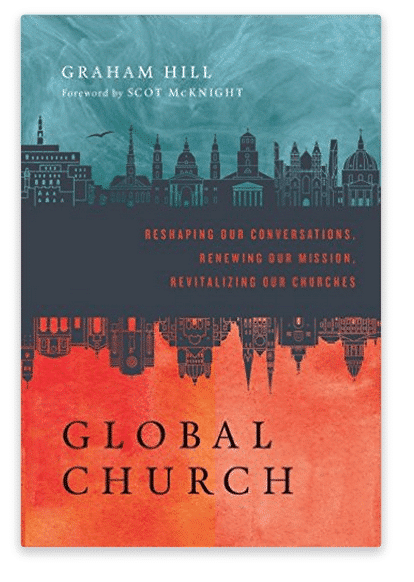
GlobalChurch Book & Study Guide
Don’t forget to buy Graham Hill’s book, “GlobalChurch.” It includes a comprehensive Study Guide for small group and classroom settings.
Comment Policy: Please stay positive with your comments. If your comment is rude, it gets deleted. If it is critical, please make it constructive. If you are constantly negative, aggressive, a troll, or a hater, you will get banned. The definition of terms is left solely up to us.
